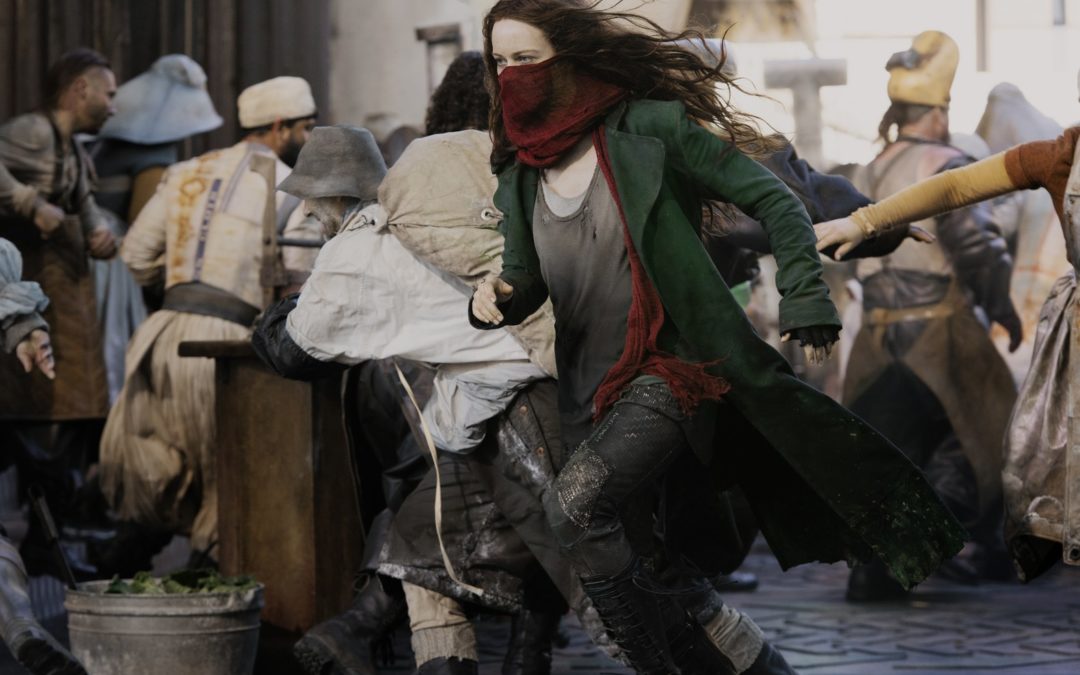
by LeBron Hill | Jan 21, 2019 | News Slider
This year’s MLK Diversity Breakfast featured mayor’s office Chief Equity Officer Ashford Hughes as keynote speaker. Lumination reporter Lebron Hill was there to report and speak to Lipscomb faculty and guests as they reflected on the legacy of Martin Luther King Jr. and shared their perspectives on the importance of inclusion to our...

by LeBron Hill | Dec 27, 2018 | Arts and Entertainment, News Slider, Opinion
Aquaman first lashed into theaters last year in Justice League, giving us a glimpse into Jason Momoa’s portrayal as the future king of Atlantis. Fast forward one year, and Momoa has made this character into his own with his unique formula of charm and wit. Director James Wan has made a name for himself with films like Saw and Fast and Furious franchises but outdoes himself with Aquaman. After the events of Justice League, Arthur Curry (a.k.a Aquaman) is contacted by the underwater princess Mera (Amber Heard) about his half-brother Atlantean Orm’s less-than-nice plans. A reluctant Curry joins Mera on a quest but along the way becomes what the kingdom of Atlantis needs. The concept of Aquaman — a superhuman who can talk underwater, swim at high speeds and communicate with sea creatures — is the first of its kind to be captured on film. Wan’s capturing of his powers makes it easy for the viewer to understand how they can actually work. Underwater scenes looked too unrealistic, which, admittedly, is the hardest task that the visual crew had to do. The fight scenes are well choreographed, and the camera angles during the fights help to make the action more dynamic. The makeover given to Arthur Curry adds to what makes the movie so well done. Most people who follow the character know him as a blonde-haired, blue-eyed hero who gets mistaken as Mermaid Man from the popular cartoon series Spongebob. Casting Momoa, a Hawaiian native, gives the role a more authentic portrayal. The role wouldn’t have been half as good if Momoa wasn’t casted. He’s the coolest guy...

by LeBron Hill | Dec 18, 2018 | Arts and Entertainment, News Slider, Opinion
Mortal Engines has several attractive qualities at the forefront. But these qualities can’t pull it through as a whole, even though the possibilities were high. It’s directed by Christian Rivers, protege of Peter Jackson, who also serves as writer for the film. It’s a movie adaptation of the worldwide best seller of the same name, adding the aspect of having a “cult” following. A world war caused a massive geological upheaval, centuries before the current story, that forces cities to become mobile so that they may escape dangers such as earthquakes and volcanoes. The movie begins with Hester Shaw (Hera Hilmar) present on a city that is being chased by the Londoner mobile city. Once the smaller city is captured by the Londoner, Hester’s motive for being on the city ship is clear. Her goal becomes more difficult when obstacles appear that take her on a much deeper quest. One of the best aspects of the film is the visuals, yet even these have room for improvement. For those unfamiliar with the book and who only see the trailer will notice the gigantic mobile cities. However, there is only a handful of these that you see in the movie, which also begs the questions, where did all of the cities go? Did the Londoner capture all of the other cities? The movie never answers these questions nor gives light to any other mobile city. Jackson’s career as a great writer and director is already established by his work in the Lord of Rings and The Hobbit franchises, but his vision for this film was hard to grasp for most...

by LeBron Hill | Dec 4, 2018 | News Slider
The last week of school can bring stress due to final exams, and at Christian schools, the often mad scramble to get those remaining chapel credits. This semester, chapel credits were reduced from 30 to 25 credits. However, no service credits were allowed (previously, students could get up to five). Thus, attendance at weekly chapel gatherings has been a must for most students. Lana Zring is the head of the “I Am Second chapel, held every Thursday at 3:30 p.m. in Zebi’s lounge. During this time in the semester, Zring noted they typically see a rise in attendance with their last chapel having over 200 students. Zring credits the chapel’s attendance to the flexibility the chapel gives students. “I would get a lot of students who would come in and would say this is the only chapel that I have time for outside of regular chapel hours,” Zring said. She also suggested that having chapels that are later in the day such as “I Am Second” would benefit many students. Student Sarah Pack commuted the earlier part of the semester from Greensboro but found the commute too difficult, which led her to go back on campus. Since then, she has gone to the chapel office to see how she could make up for the credits missed and said she has experienced difficulties. Pack said the meetings were rescheduled a few times before she got to meet with someone. During the meeting, she was told she didn’t have a “special case,” but she was given the opportunity to watch videos of chapel on YouTube and write papers on each of them...

by LeBron Hill | Oct 31, 2018 | News Slider, Opinion
Last week, Megyn Kelly was removed from NBC’s “Megyn Kelly Today” after comments she made about “blackface,” defined as painting your face or body a color different from your own. During this segment, she expressed her exhaustion with the political correctness regarding Halloween costumes, and later said that she didn’t have an issue with a child wearing blackface as part of a Diana Ross costume. Soon after it aired, people showed their displeasure with the comments. Kelly went on her show the next day and said she didn’t know the history behind the practice. She was taken off the air for good on Friday, receiving a reported $69 million buyout from her contract. Blackface can be dated back to the 1830s, when white performers in minstrel shows used burnt cork and black greasepaint on their skin to imitate their perception of black people. One of the most popular songs was “Jump Jim Crow,” by white minstrel performer Thomas Dartmouth Rice, which portrayed the black man as stupid and barbarian, helping to perpetuate stereotypes of black America.Even black entertainers performed in blackface, because the white audience was comfortable with the portrayal and the performers had to make money. Minstrel performing burned out by the 1920s, but the popularity of blackface moved on to other platforms, such as film. “If we don’t learn from our history, we are doomed to repeat it,” the saying goes. These incidents continue to occur in modern times, including a notable pattern of students wearing blackface at universities across the country. The latest example happened at California Polytechnic University, where a student drew outrage for appearing in...






